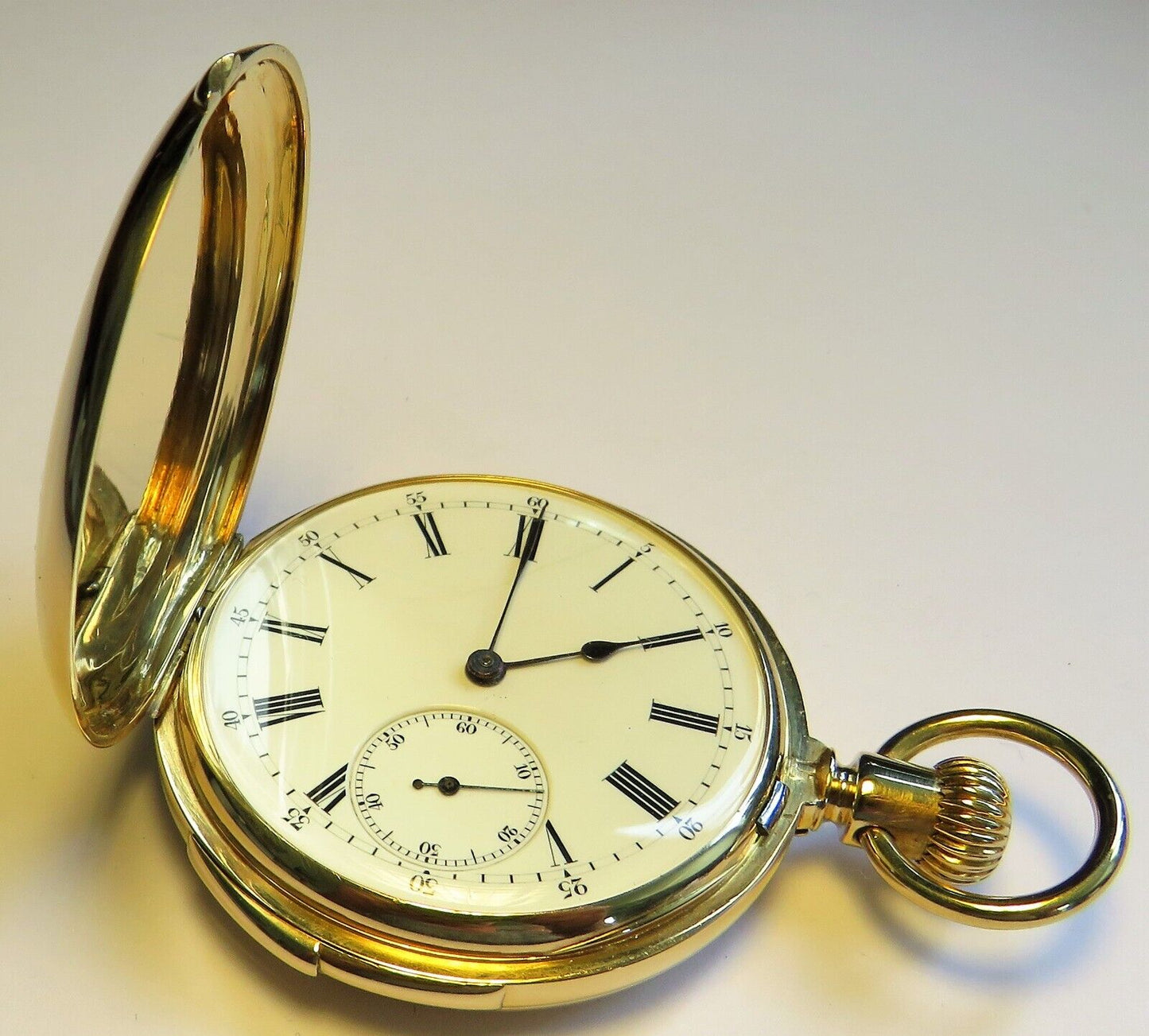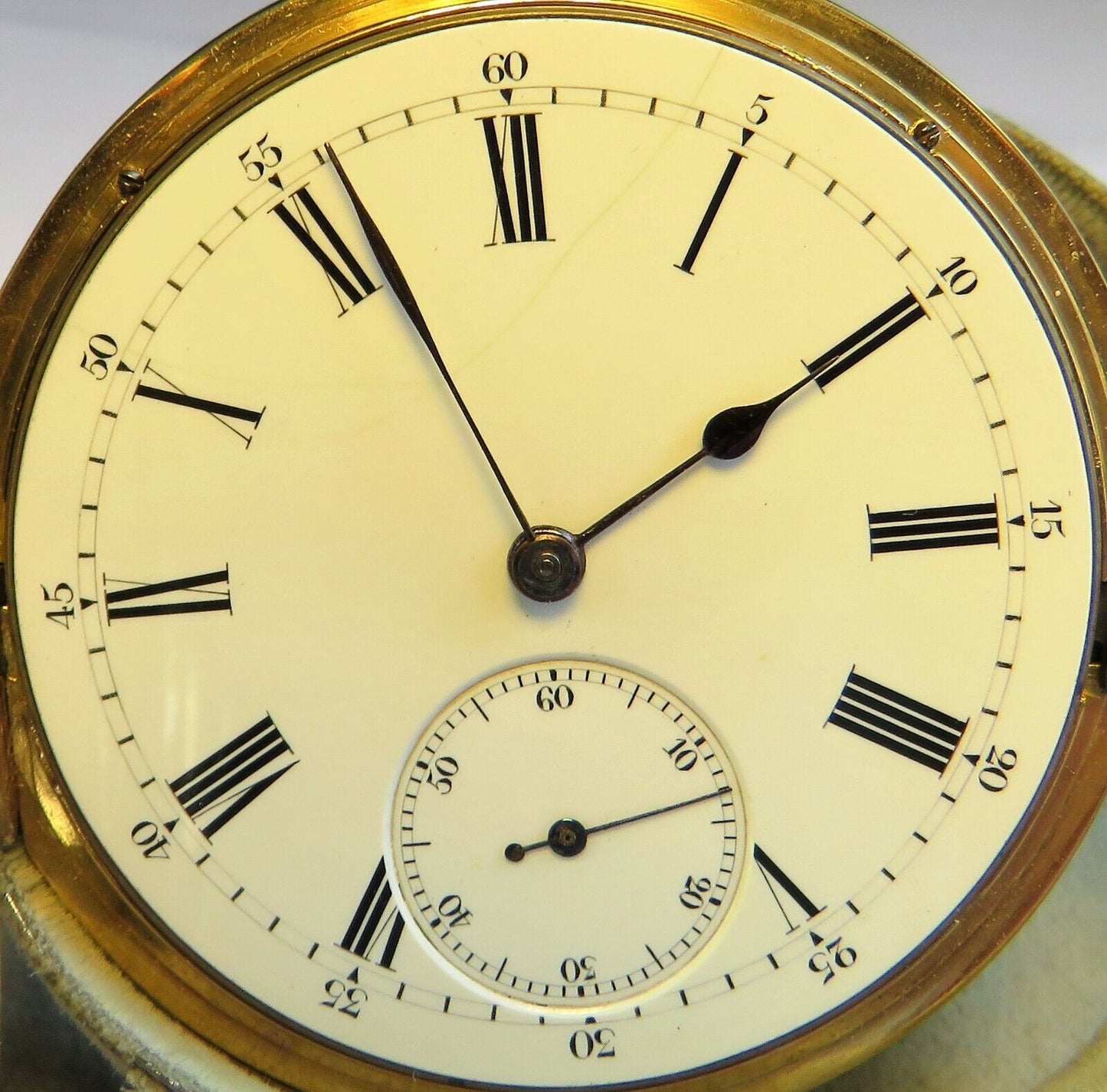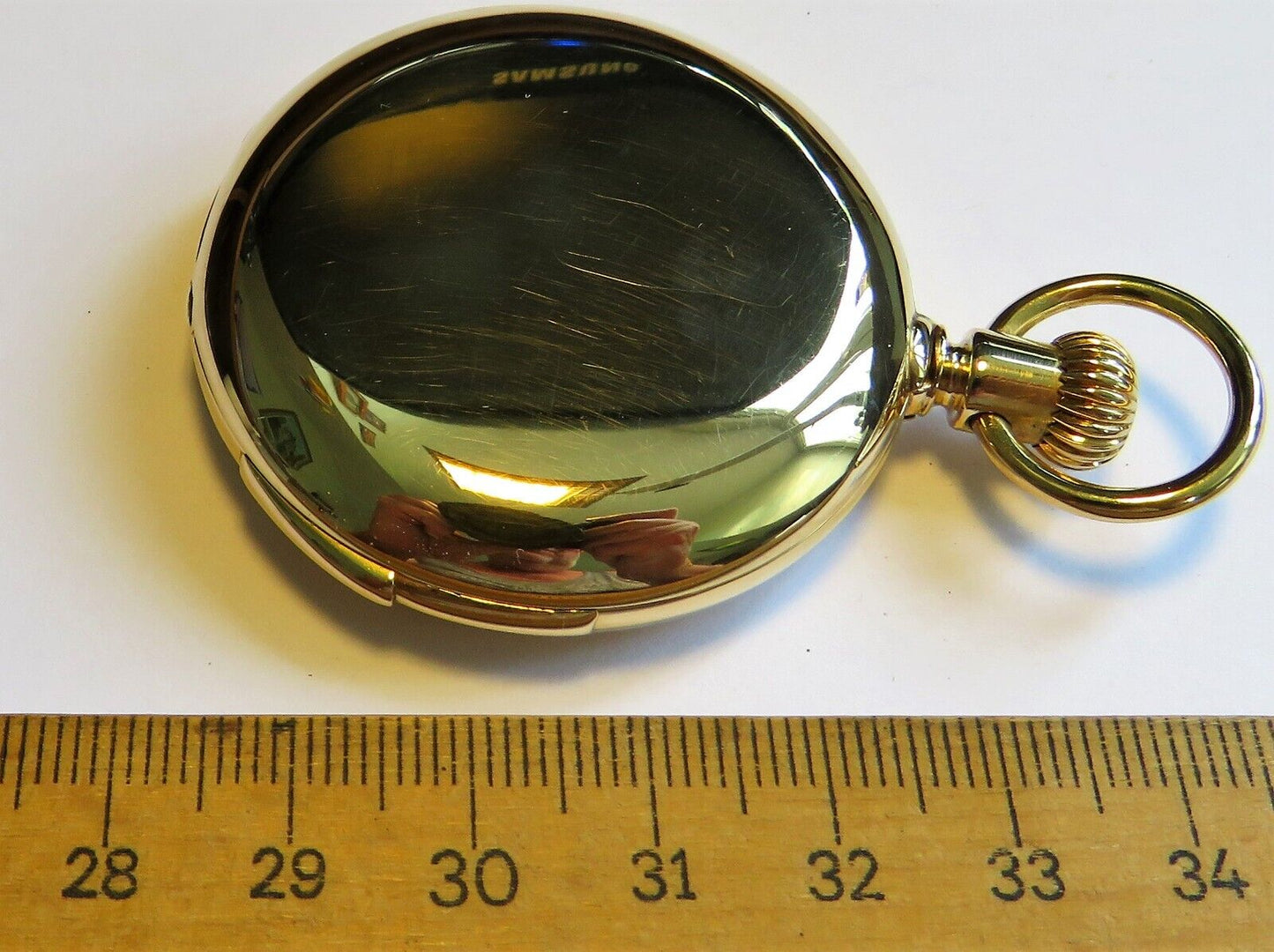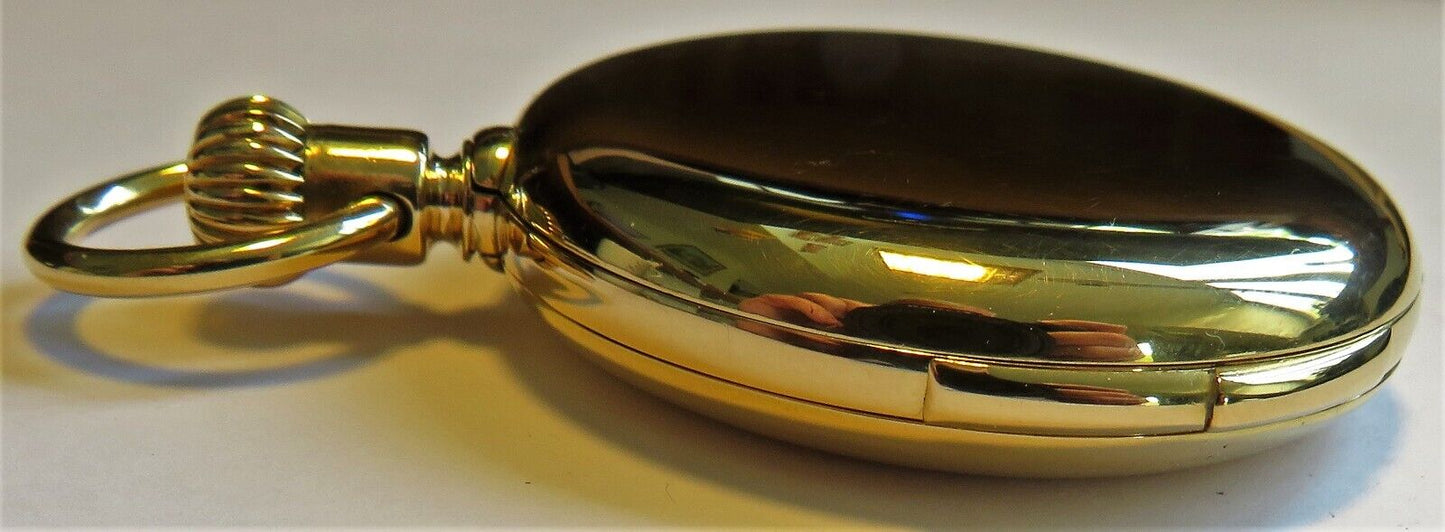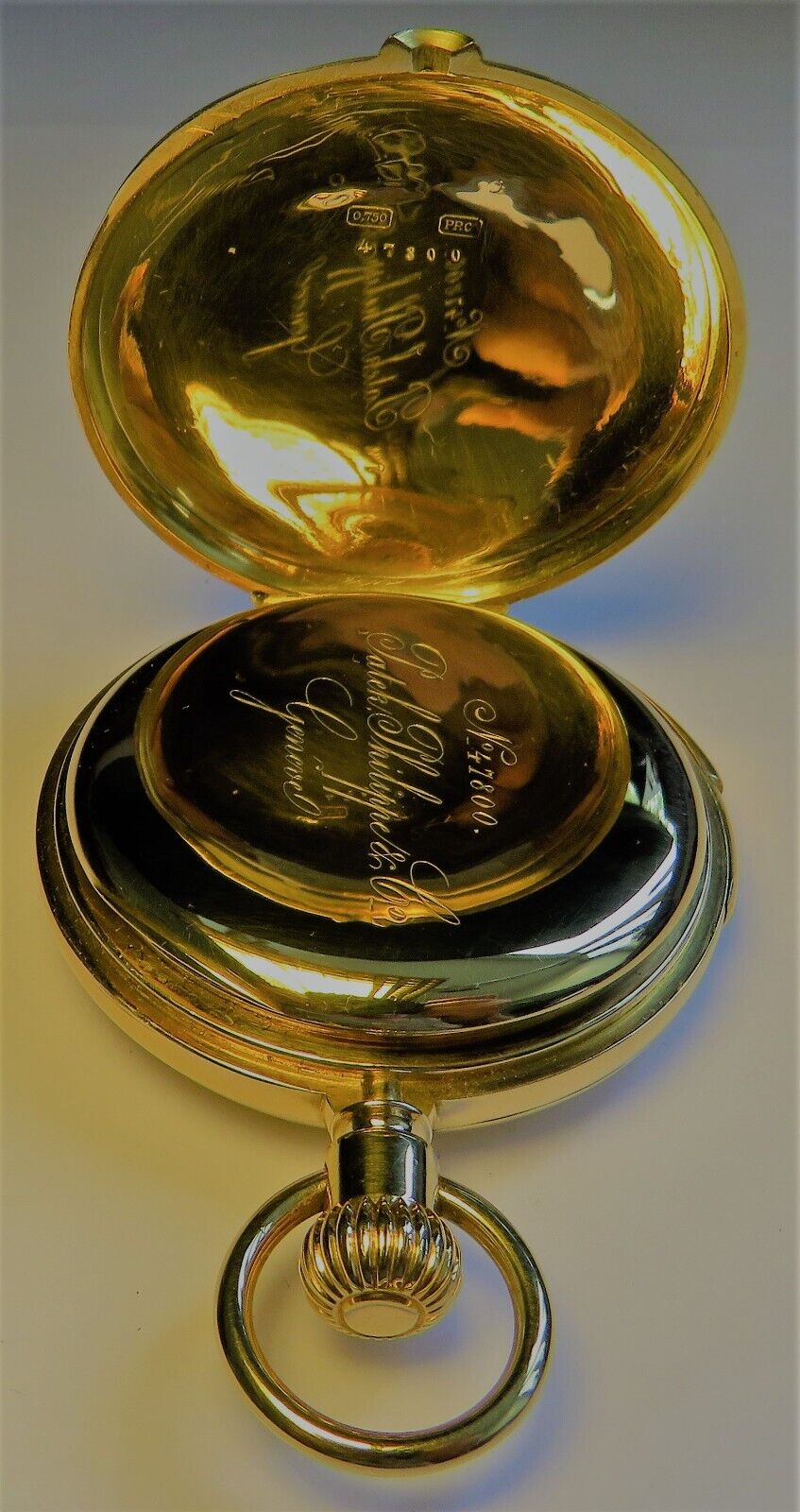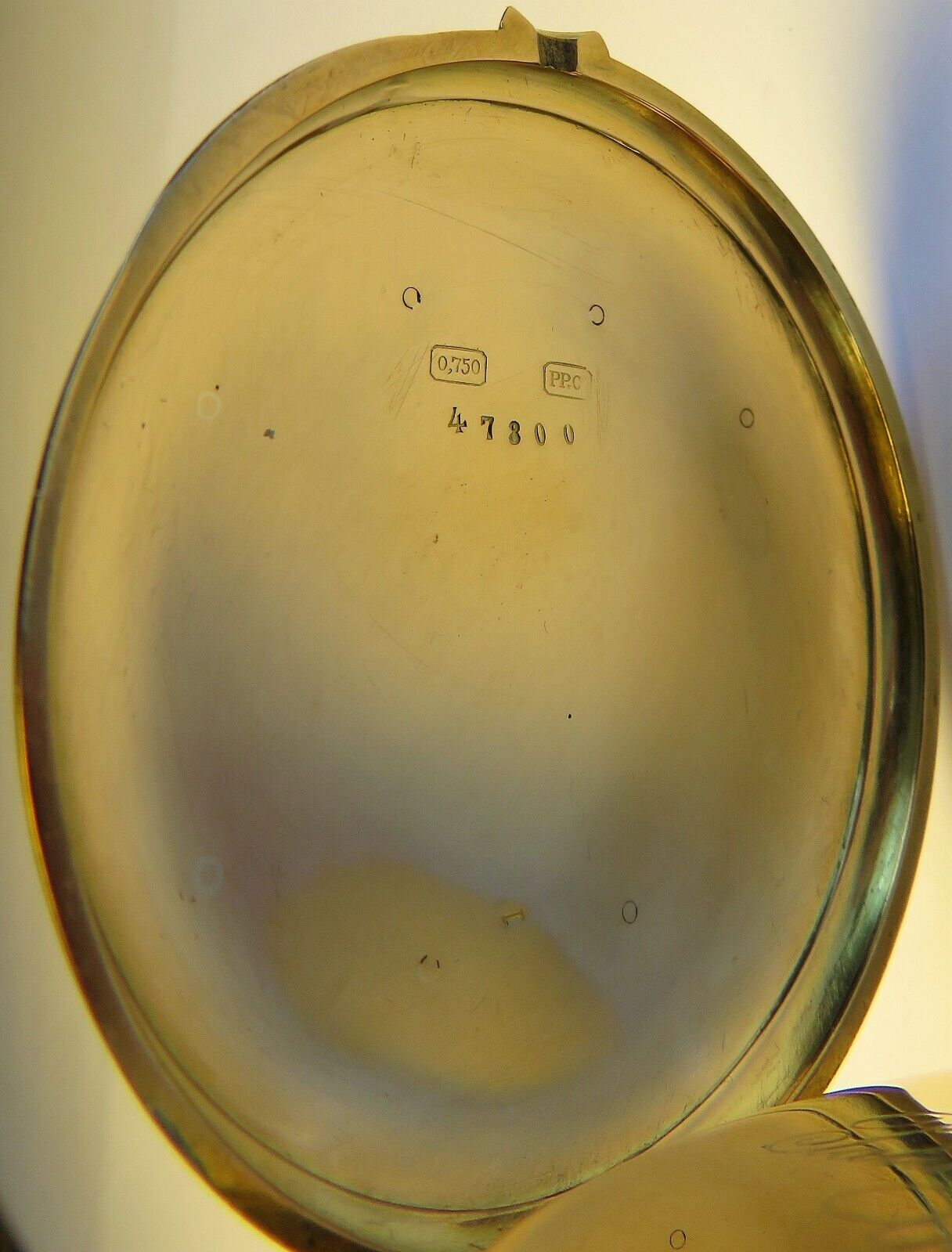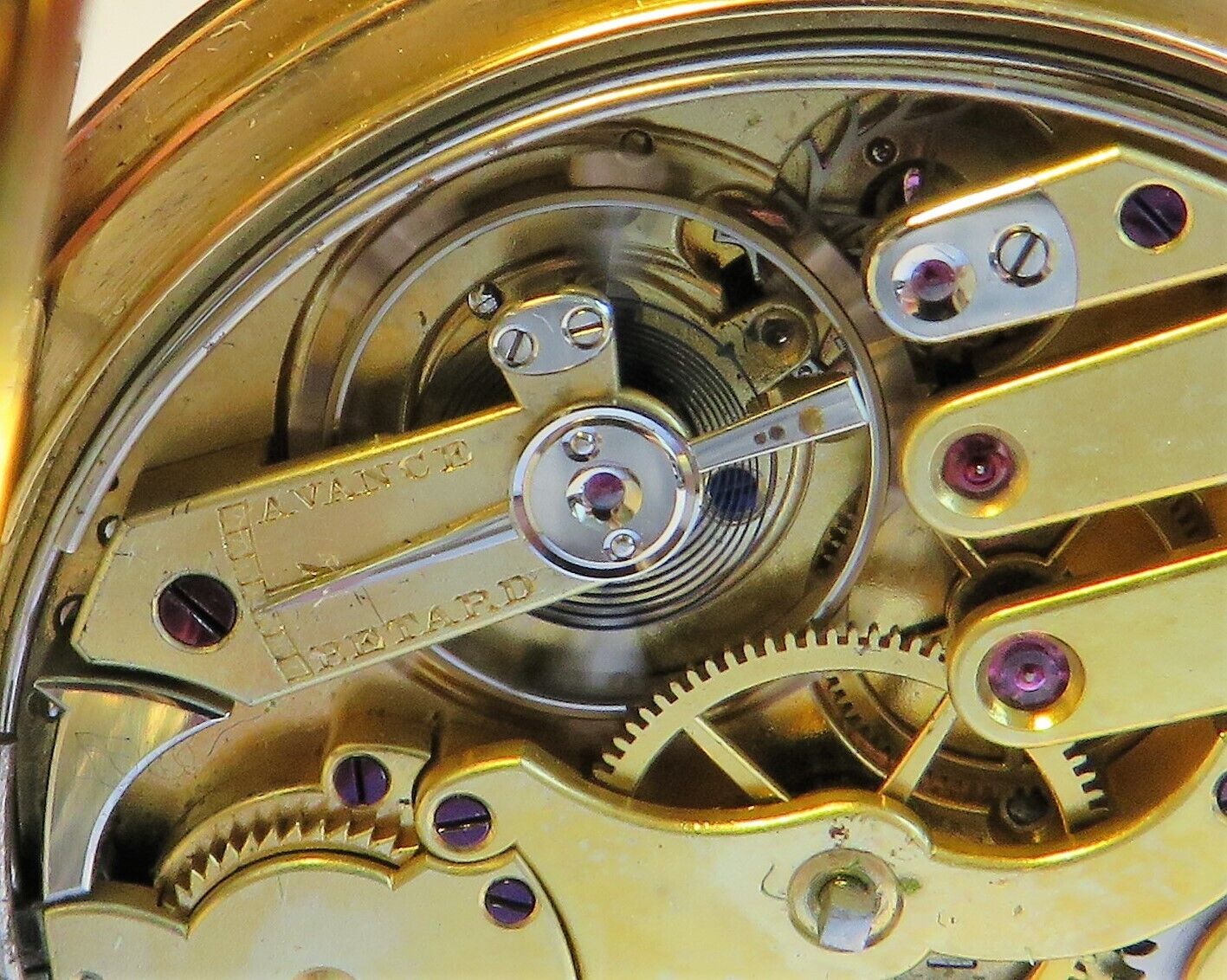Patek Philippe
Patek Philippe & Co 750 18K Gold Quarter Repeater TU with Certificate ca. 1870
Patek Philippe & Co 750 18K Gold Quarter Repeater TU with Certificate ca. 1870
Couldn't load pickup availability
Subject of the offer :
Patek Philippe—and other high-quality brand watches—were not signed at the time of their creation, but only upon customer request, usually on the case. The Patek Philippe signature, written out in full on the inner case back, was thus custom-made according to the buyer's wishes. However, the "PP" signature/abbreviation in the original proportions and typography on the outer case back was already standard at Patek Philippe, thus proving origin and authenticity.
The inner signature could have been engraved later, but not the stamp. Moreover, the unique quality of the high-precision movement with multiple wolf teeth clearly proves the originality and origin.
Patek Philippe is the best and therefore most valuable watch manufacturer in the world, whose complicated pocket watches regularly achieve seven-figure hammer prices at specialist auctions
Patek, like Lange & Söhne, has regularly produced elaborate repeater pocket watches, but only a few hundred in total over the past 190 years of its existence. If you subtract from this small production number another 190 years and three major wars, during which valuable gold pocket watches were regularly melted down in times of need, then only a few examples remain.
Description:
Early and very fine Patek Philippe gold savonnette with quarter-hour repeater, No. 47800, Geneva around 1875, three-covered watch with folding mechanism through the crown, early crown winding according to Adrien Philippe
Approx. Ø49mm, approx. 95g, 18K gold, case with Patek Philippe hallmark and serial number 47800, matching the movement, dust cover signed and numbered, very fine Patek Philippe precision lever movement with quarter-hour repeater and wolf's toothing, enamel dial with Roman numerals, blued steel hands
Dial with a fine old hairline crack, which isn't really a "crack" in the sense of a split, but rather a very, very slight micro-damage that isn't even noticeable at first glance (see photos)
The now smooth, polished gold case in the fine à-goutte finish originally featured an applied gold aristocratic monogram and a gift dedication in the spring-loaded lid. Both were expertly removed in the postwar period; the former dedication and monogram are not even vaguely recognizable, but this unique artifact originates from aristocratic ownership.
The highest, indeed unique, manufacturing quality for the era:
- early crown winding mechanism according to Adrien Philippe
- Folding mechanism via crown
- functional original Patek quarter repeater
- blued screws in the factory
- artistic blued hands in Breguet style
- multiple wolf teeth
- Moustache Anchor
- screwed chaton
The watch runs – as does the repeater (accuracy not tested). The repeater sounds wonderful, but it rattles a little in certain positions. This is not a defect, but rather a matter of adjustment. Any good watchmaker can adjust the position of the gongs slightly in 1 minute. It makes little sense to do this before shipping, possibly halfway around the world.
EZ: 1-2 best collector's condition! Virtually no signs of age or wear! Enamel dial unrestored in good condition with only a single, very fine hairline crack, flawless crystal, both lids close tightly and flush, crown is secure and not worn, no noticeable scratches or dents on case or bezel, starts and runs immediately and powerfully (accuracy not tested).
History of the watch manufacturer Pateck & Co Geneve (Source: Watchwiki:
On May 1, 1839, the watch manufacturer Patek, Czapek & Co. was founded in Geneva by two Polish immigrants, the businessman and aristocrat Antoine Norbert Count de Patek and the watchmaker Francois Czapek. Due to differences between the two, however, the collaboration was discontinued. The latter continued to operate the company Czapek & Co. until 1869. Collaboration between Patek and Philippe
Patek chose the talented French watchmaker Jean-Adrien Philippe as his new partner after meeting him at the Paris World's Fair in 1844 and getting along well with him. Philippe had already enriched watchmaking history with one of its most revolutionary inventions: the crown winding mechanism. Since then, watches no longer required an additional key for winding; instead, both winding and setting the hands to the time were now performed using the far more practical crown.
On May 15, 1845, the company was renamed Patek & Co. after Jean-Adrien Philippe and Vincent Gostkowski joined the company. That same year, a patent was filed for a watch with a winding stem and hand-setting mechanism. Patek & Co. manufactured its first minute repeater.
On January 1, 1851, the name was changed from Patek & Co. to Patek Philippe & Co. In 1881, a patent for a precision fine adjustment device was filed by Philippe. Joint-stock company - and important inventions
On February 1, 1901, Patek Philippe became a public limited company and renamed Ancienne Manufacture d'Horlogerie Patek Philippe & Cie. SA. In 1902, a patent for a double chronograph was filed.
The company continued to attract attention with significant inventions. In 1925, the world's first wristwatch with a perpetual calendar was released, and in 1927, the first wrist chronographs were produced.
When the global economic crisis led to the need for a financially strong investor in 1931, brothers Charles and Jean Stern, whose dial factory had been a supplier to the company for some time, agreed to acquire a majority stake in the company. Since then, the Stern family's name has been synonymous with Patek Philippe. (Today, Philippe Stern, the third generation of the family, serves as president of the company. Thierry Stern, his son, represents the fourth generation as vice president.)
In 1932, the company introduced the Calatrava model, named after a knightly order founded in 1158 by Abbot Raimondo in the town of Calatrava. This model series has since become one of the manufacturer's classics. The Calatrava Cross, depicted on the crown, remains the trademark of the watches.
In 1937, Geneva watchmaker Louis Cottier developed the first "heure universelle" wristwatches for Patek Philippe. The dials of these world time watches allowed the time to be read simultaneously in all 24 time zones.
In the early 1940s, series production of chronographs and wristwatches with perpetual calendars began. In the following years, Patek Philippe movements won numerous precision competitions at the Geneva Observatory.
In 1962, the world's first wristwatch with a perpetual calendar and automatic winding was introduced.
In 1966, Jean Daniel Rubeli, head of the development department, designed the Ellipse model. He considered the golden ratio in the shape of the round case. The mysterious shimmering blue of the dial was achieved by chemically treating the gold.
In 1976, the Nautilus model, designed by Gérald Genta, was launched. A distinctive feature of this watch was its porthole-shaped bezel, which, pressed onto the monocoque case with two side screws, ensured water resistance to 120 meters. Since 1977, Patek has been producing the thinnest automatic movement, Caliber 240, with a thickness of just 2.40 mm.
Today, at a time of increasing concentration in the watch sector, Patek Philippe is one of the few remaining independent watch companies. The company is also the only Geneva-based manufacturer whose entire production of mechanical watch movements bears the Geneva Seal (Poinçon de Genève).

